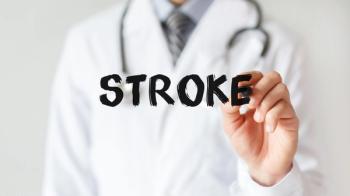
- Vol 31 No 10
- Volume 31
- Issue 10
The Most Exciting Time in the History of Psychiatry
Advances in psychiatric research, spanning the entire spectrum of biological, psychological, and social aspects of mental processes and functions, have transformed the field of psychiatry. More in this inaugural piece by Psychiatric Times' Editor in Chief.
EDITORIAL
I’m incredibly honored and excited to be starting my role as Editor in Chief of Psychiatric Times, which has become the most widely read publication for psychiatrists in the US. I look forward to continuing the visionary approach of the founding editor, John Schwartz, and his successors, Drs
We live in what is arguably the most exciting time in the history of psychiatry. At the dawn of the 20th century, though, the themes that would occupy psychiatry in the coming century were already in evidence. One theme has been the emphasis on understanding brain pathology in psychiatric illness, building on the work of the generation of Eugen Bleuler, Emil Kraepelin, and Adolf Meyer.
Also, 1900 marked the publication in Europe of Freud’s Interpretation of Dreams, and the beginnings of the modern understanding of psychological development and our emphasis on psychotherapeutic treatments. Less well known, however, is another work on which Freud was laboring at the same time. In the “Project for a Scientific Psychology,” Freud was attempting to understand the
What were the other preoccupations a century ago? Providing humane and effective treatment for psychiatric disorders, developing a meaningful diagnostic classification, and overcoming substantial societal forces working against rational diagnosis and humane treatment were clearly at the forefront. Building on the tremendous scientific advances of the late 19th century, the beginning of the past century marked a time of great optimism for what 20th-century science would bring to psychiatry.
We have not been disappointed, and we are all aware of the broad range of amazing advances that have occurred. We are still preoccupied with many of the same issues as our colleagues from a hundred years ago, but, of course, in ways transformed by over a century of experience and newly discovered knowledge. Social ostracism, stigmatization, discriminatory government and corporate policies, and discriminatory limits on access to and
In 2000, we passed the 100th anniversary of the publication of Interpretation of Dreams and the writing of “The Project for a Scientific Psychology.” Freud would be amazed and gratified at the progress that has been made since his time. Advances have occurred, as we know, not only in the area of psychoanalysis and the development of other psychotherapies, but also in understanding the connections between brain and mind, which was the major focus of the “Project.” Freud himself wrote that he believed his psychoanalytic theories were only a temporary model that would continue to change with increasing understanding of the brain’s structural and functional nature.
Just over 10 years ago, the Nobel Prize in Medicine was awarded to
Advances in psychiatric research, spanning the entire spectrum of biological, psychological, and social aspects of mental processes and functions, have transformed our field and our clinical work. We are, though, only in the early years of studying underlying mechanisms of both normal and abnormal brain function and structure via direct functional imaging and sophisticated lab techniques. More exciting findings lie ahead.
We will undoubtedly, at some point, learn to influence these processes with more precision than is now possible. It is also true, however, that interpersonal experiences, such as in psychotherapy, can alter brain function in the same way as medications, as we have seen in
It is with the goal of integrating the best of our humanistic traditions with our most cutting-edge scientific advances that Deputy Editor Michelle Riba, the Editorial Board, and I approach the next phase of our work at Psychiatric Times. Our primary focus continues to be to provide an outstanding resource to improve the clinical practice of psychiatry. You are most welcome to contact me at
Articles in this issue
about 11 years ago
Introduction: The Challenges of Treating Older Adultsabout 11 years ago
Hoarding in Late Life: Implications for Cliniciansabout 11 years ago
Diagnosis and Treatment of Late-Life Depressionabout 11 years ago
Treating Complex Trauma Survivorsabout 11 years ago
Severely Depressed Most Responsive to Combined Cognitive and Drug Rxabout 11 years ago
Strategies for Treatment-Resistant OCDabout 11 years ago
Extinctionabout 11 years ago
The Hidden Suffering of the PsychopathNewsletter
Receive trusted psychiatric news, expert analysis, and clinical insights — subscribe today to support your practice and your patients.

















